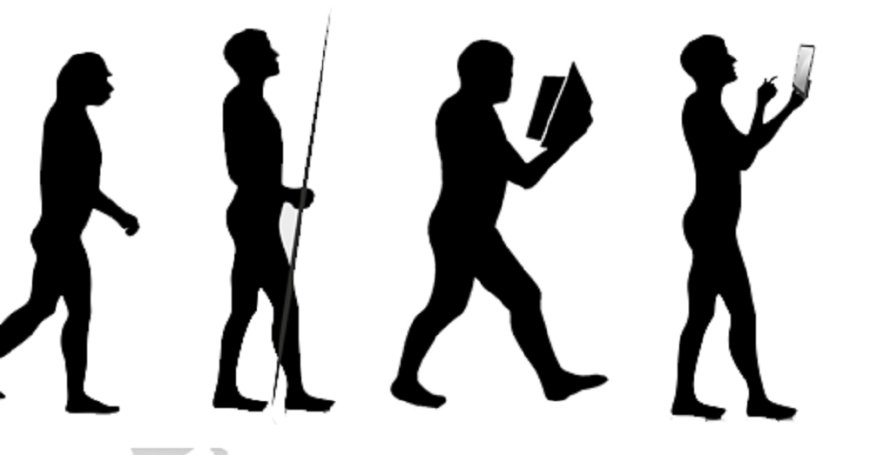4 basic points about the evolution of teaching in the last century
face a future that often anticipates unconventional scenarios. 4 basic points about the evolution of teaching in the last century.

The changes allow us to respond to realities that, over time, discover new needs or show that moving forward is necessary to face a future that often anticipates unconventional scenarios. 4 basic points about the evolution of teaching in the last century.
What were the most significant changes in the evolution of teaching? Education constitutes a key piece in the development of any human being. In an increasingly digital society, the evolution of the role played by each of the agents that intervene in the process, as well as the resources or the educational systems themselves, mark notable differences in the learning process.
Although history is full of examples in this regard, over the past decades change has developed at breakneck speed. Sponsored, to a large extent, by the irruption in the classrooms of new technologies or the change in the profile of teachers and students who have become digital natives.
What aspects have been most significant? What are the key points in the evolution of teaching in the last century? We review some of the most outstanding:
- The teacher-student relationship
While it is true that different agents converge in the teaching and learning process, it is no less accurate to say that teachers and students are the main protagonists. The evolution of the roles of each other, as well as the relationship between the two, has been one of the aspects that has changed the most in recent years.
At the beginning of the century, the teacher was generally a figure who wielded remarkable authority, with strict rules that reached even the family sphere. Today teachers have a much kinder role.
Respect is still fundamental in the classroom, but the master classes are left behind. The role of the teacher has shifted towards a friendlier figure, almost a guide who accompanies the students in this learning process, fostering creativity and participation. Also assuming their role in the teaching team and making use of new technologies to train the professionals of the future.
But not only the figure of the teacher has undergone a profound transformation. The students have also changed. If before they were mere recipients of knowledge, today they are an active part of the teaching-learning process, they are protagonists of their own educational catharsis.
- New methodologies
The evolution of teaching is not only seen in the change in teacher-student roles, but is the result of the confluence of multiple factors. The rise of new methodologies is a reality that is increasingly being seen in the classroom. Already at the end of the 19th century, the renewal movement called ˜the new Education™ advocated making the student the protagonist of their own learning process.
Compared to traditional methodologies, with students condemned to listen passively to learn the lesson based on memorization and academism, active methodologies bet on teamwork as well as solving problems based on real situations.
Must Read: 6 strategies to encourage reading in your students
The result is a greater motivation of the students who, in addition, actively participate, improving not only their understanding and learning, but also the development of their critical thinking and skills through creativity, commitment and research. The flipped classroom, project-based learning or gasification™s are just some examples of these new methodologies that are marking the evolution of teaching.
- The pedagogical materials
Another of the key aspects in the new educational settings has to do with the pedagogical materials. This is probably one of the chapters where the changes are more easily identifiable and it is that it is not necessary to be a professional in the sector to realize the new tools used in the classroom.
If at the beginning of the century books and printed materials represented a remarkable transformation, today it is digital backpacks that are making their way into the educational landscape. Although traditional materials are still very present in the early stages of teaching, at higher levels, the old blackboards have given way to digital whiteboards, notebooks to tablets and so on.
Nobody is surprised to see a teenager carrying a smartphone something that was unimaginable just a few decades ago. New technologies are here to stay and their integration process in classrooms is essential not only to adapt teaching to the digital reality of the society in which we live, but to educate them in a responsible use of them.
- Duties
This is undoubtedly one of the most controversial issues when talking about the teaching-learning process. However, it constitutes one of the other aspects that forms part of the key points in the evolution of teaching in the last century.
There are opinions for all tastes and, far from ending the debate, the issue does not seem to reach a consensus. Many defend the fact that they help to retain knowledge, understand what has been done in class, improve study habits or promote self-discipline. But there is no shortage of voices that point to the fact that they put greater pressure on students, cause stress in schoolchildren or promote inequalities.
The changes, however, are evident and in this scenario the role of the teacher is key to optimizing these tasks. Currently, teachers organize and design motivating didactic experiences for students, turning homework, on many occasions, into a game that enhances the creativity and experimentation capacity of students.
Roles, methodologies, materials, duties ... The list of milestones that have marked the evolution of teaching in the last century extends to many different aspects. From the interrelation of all of them, the education of the future will emerge which, in any case, is beginning to be a reality in many centers.
